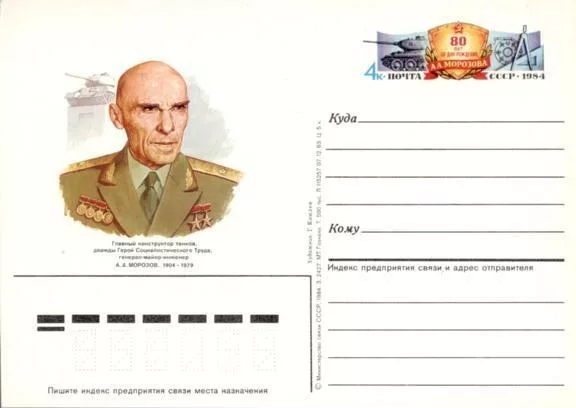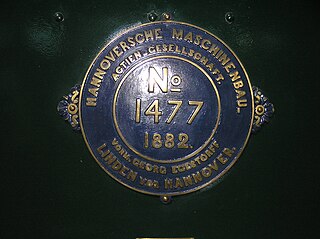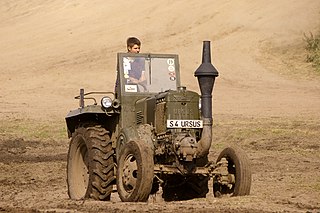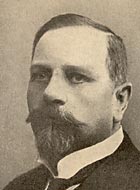This article does not cite any sources .(April 2018) (Learn how and when to remove this template message) |

Fritz Huber (1881-1942) was a German mechanical engineer and designer of the Lanz Bulldog tractor.
This article does not cite any sources .(April 2018) (Learn how and when to remove this template message) |

Fritz Huber (1881-1942) was a German mechanical engineer and designer of the Lanz Bulldog tractor.
Fritz Huber was born on 8 March 1881 in Wasserburg am Inn. He came from an old family of engineers. In Munich, he first attended the industrial school, then he began studying at the local technical college. He successfully completed his studies in 1903 and went on to work in France and Switzerland. After his return to Germany, he got a job at the Grade company in Magdeburg, where he devoted himself to the construction of high-quality two-stroke engines. He also built the first hot-bulb engines at the Climax plant in Vienna and improved their running characteristics with adjustable injectors and improved mass balance. On 20 September 1916, he obtained employment with Heinrich Lanz AG in Mannheim. He constructed gasoline-powered tractors for the German army in the First World War. Between 1918 and 1921 he developed a single-cylinder hot-bulb engine for stationary work. This engine was later used in the Lanz Bulldog, the first German heavy-oil tractor in mass production. Because of the First World War, the testing of the concept had to be postponed but, from 1920, the development and construction of the Bulldog got under way. The tractor got its name because of its external resemblance to a bulldog and Fritz Huber is considered the "Father of the Bulldogs". In 1942, Huber retired because of illness. He died on 14 April 1942 in Mannheim.

Mannheim is a Universitätsstadt in the southwestern part of Germany, the third-largest in the German state of Baden-Württemberg after Stuttgart and Karlsruhe with a 2015 population of approximately 310,000 inhabitants. The city is at the centre of the larger densely populated Rhine-Neckar Metropolitan Region which has a population of 2,400,000 and is Germany's eighth-largest metropolitan region.

Fritz Todt, was a German construction engineer and senior Nazi, who rose from the position of "Inspector General for German Roadways", where he directed the construction of the German Autobahns (Reichsautobahnen), to become the Reich Minister for Armaments and Ammunition. From that position he directed the entire German wartime military economy. At the beginning of World War II he initiated what Hitler named Organisation Todt, a military-engineering company, which supplied industry with forced labor and administered construction of the Nazi concentration camps in the late phase of Nazi Germany. Todt died in a mysterious aircraft crash in 1942.

Field-Marshall is a brand of farm tractor which was manufactured by Marshall, Sons & Co. of Gainsborough, Lincolnshire in the United Kingdom.

The Case Corporation was a manufacturer of construction equipment and agricultural equipment. Founded, in 1842, by Jerome Increase Case as the J. I. Case Threshing Machine Company, it operated under that name for most of a century. For another 66 years it was the J. I. Case Company, and was often called simply Case. In the late 19th century, Case was one of America's largest builders of steam engines, producing self-propelled portable engines, traction engines and steam tractors. It was a major producer of threshing machines and other harvesting equipment, The company also produced various machinery for the U.S. military. In the 20th century, Case was among the 10 largest builders of farm tractors for many years. In the 1950s its construction equipment line became its primary focus, with agricultural business second.

Alexander Aleksandrovich Morozov was a Soviet designer of tanks, general, major-engineer (1945), and doctor of technical sciences (1972), twice Hero of the Socialist Labour. The member of the CPSU since 1943. Ended engineering technical school (1930). In 1931–1938 the head of group of CB of the plant, since 1938 the deputy head of CB, then head of CB and the deputy of the main designer of the construction factory, from 1940 he became main designer. The Morozov took part of the participation in development of the first domestic, T-24 (1930) medium tank, and also the wheel-caterpillar BT-2 (1931), BT-5 (1932), BT-7 (1935) and BT-7M (1939)light tanks. BT tanks along with T-26 constituted the basis of the tank arm of Soviet Armies. As the technical lead of the project together with M. I. Koshkin and N. A. Kucherenko headed development of the medium T-34 tank in 1940. During the Great Patriotic War, he was the chief designer of upgrades of the T-34 tank, which was recognized as the best tank of the period of the Second World War. After the war, under the direction of Morozov, a number of new types of tanks, etc. was created. The Deputy of Supreme Council of the USSR of the 5th convocation awarded state awards of the USSR and Lenin's award (1967) to Morozov. He was awarded 3 Orders of Lenin, an award of the October Revolution, the Orders of Kutuzov of the 1st degree, Order of Suvorov of the 2nd degree, 3 awards of the Labour Red Banner, an award of the Red Star, and other medals.

Hanomag was a German producer of steam locomotives, tractors, trucks and military vehicles in Hanover. Hanomag first achieved international fame by delivering numerous steam locomotives to Finland, Romania and Bulgaria before World War I and making of first tractor Hanomag R26 in 1924 in Germany. In 1925, they added automobiles to their line, additionally moving in 1931 into the production of construction machinery. Since 1989, the company has been part of the Komatsu company.

József Galamb was a Hungarian-American mechanical engineer. most known for model T.

The hot-bulb engine is a type of internal combustion engine in which fuel ignites by coming in contact with a red-hot metal surface inside a bulb, followed by the introduction of air (oxygen) compressed into the hot-bulb chamber by the rising piston. There is some ignition when the fuel is introduced, but it quickly uses up the available oxygen in the bulb. Vigorous ignition takes place only when sufficient oxygen is supplied to the hot-bulb chamber on the compression stroke of the engine.

Eicher tractor was a manufacturer of tractors, agricultural machinery and engines. The company was founded in 1936 by the brothers Josef and Albert Eicher in the Upper Bavaria town of Forstern. The brand name "Eicher" was last used in Europe in 2009 by the Dutch agricultural machinery dealer Hissink & Zonen and is still in use today in India at Eicher Goodearth which manufactures tractors & commercial vehicles by this name.

The Lanz Bulldog was a tractor manufactured by Heinrich Lanz AG in Mannheim, Baden-Württemberg, Germany. Production started in 1921 and various versions of the Bulldog were produced up to 1960, one of them being the Lanz Bulldog D 9506. John Deere purchased Lanz in 1956 and started using the name "John Deere-Lanz" for the Lanz product line. A few years after the Bulldog was discontinued the Lanz name fell into disuse. The Lanz Bulldog was one of the most popular German tractors, with over 220,000 of them produced in its long production life. The name "Bulldog" is widely used in Germany as a synonym for tractors even today, especially in Bavaria.

Caterpillar Energy Solutions GmbH, previously MWM GmbH and Deutz Power Systems (DPS), is a mechanical engineering company based in Mannheim, Baden-Württemberg, Germany. For many years it was known as Motoren-Werke Mannheim (MWM). In 2009 the company was the third-largest producer by revenue of gas and diesel engines.

The Ursus C-45 and C-451 was a popular Polish model of tractor. It was manufactured from 1947 to 1959 by the Ursus Factory in Warsaw, and from 1960 to 1965 by Zakłady Mechaniczne in Gorzów Wielkopolski.

The Siebel ferry (Siebelfähre) was a shallow-draft catamaran landing craft operated by Germany's Wehrmacht during World War II. It served a variety of roles in the Mediterranean, Baltic and Black Seas as well as along the English Channel. They were developed for Operation Sea Lion in 1940, the cancelled German invasion of England. Siebel ferries continued performing after the war's end in 1945.

The Schütte-Lanz G.I was a large, twin engine, pusher configuration, experimental biplane built in Germany early in World War I. Only one was completed.
Heinrich Lanz AG was an agricultural machinery manufacturer from Mannheim, Germany. The company and its brand LANZ was acquired in 1956 by the American agricultural machinery manufacturer John Deere. The company won numerous awards at the Strasbourg agricultural fair in 1866..

Windlust is a smock mill in Noordwolde, Friesland, Netherlands which was built in 1860 and is in working order. The mill is listed as a Rijksmonument.

Gustaf Woldemar Wrede af Elimä was a Finnish Freiherr, engineer and businessman. He is best known for his contribution to Finnish tractor production.

The Lanz Bulldog D 9506 is a tractor of the HR 8 series, produced by Heinrich Lanz AG in Mannheim from 1934 to 1955, with a production stop in 1945. In total, 3817 units were produced. The tractor was sold under the brand name Ackerluft (field-air). The Ursus C-45, produced in Poland from 1947 to 1959, was an illegal copy of the D 9506.

Hofherr Schrantz : Clayton Shuttleworth or HSCS were formed by the merger of two Austro-Hungarian agricultural engineering businesses in 1911. A new joint stock company was formed with headquarters in Vienna and Budapest. Clayton & Shuttleworth which had been founded in Lincoln, Lincolnshire Lincoln in 1842 and had established themselves in Vienna in 1857 and later in Budapest continued its independent operations outside Austria, Hungary and Romania.

Heinrich Lanz was a German entrepreneur and engineer. He founded Heinrich Lanz AG, a manufacturer of agricultural machinery and stationary steam engines and locomotives exported globally.